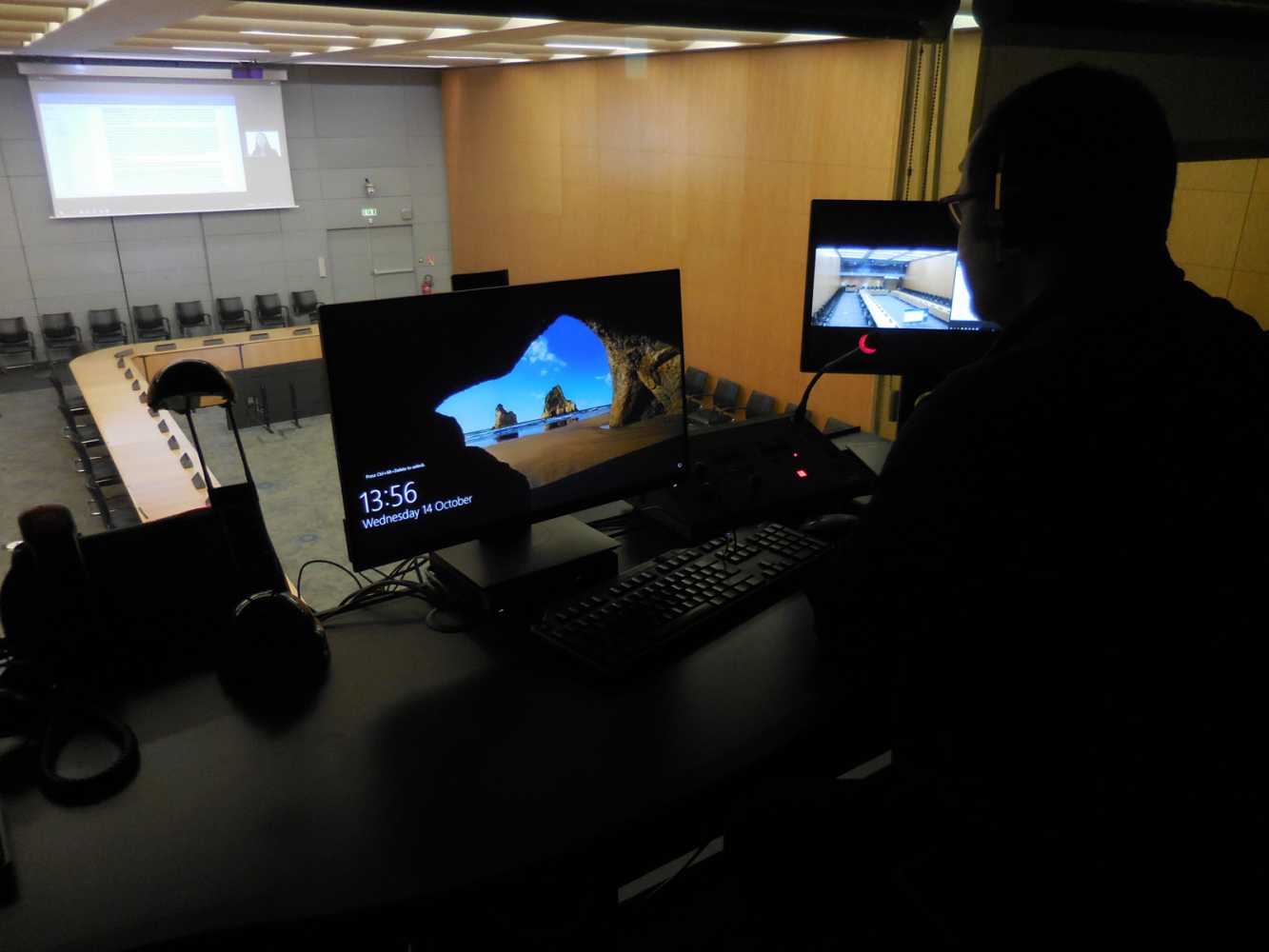Dante enables OECD multilingual conferencing
- Details

Currently, OECD manages around 250 daily web conferences. Most high-level meetings offer interpretation in at least both official languages of the OECD and rely on collaboration, meaning interactions are dynamic amongst participants.
Audio visual services (audio, video and web conferencing) have been used for several years in OECD, but with the significant increase in remote participation requests in recent months, and the massive virtualization of OECD events, communication needs have evolved. Today, many meetings take place in a virtual (remote participants) or hybrid (presence of participants simultaneously on site and remotely) fashion.
In this context, the audiovisual department had to quickly adapt and rethink its strategy, in particular by adapting its digital infrastructure to new interpretation flows.
“We had used Dante before the pandemic, but only for a few implementations,” Guillaume Carlier, head of the Technical Audiovisual Support Unit at the OECD explained, “However we knew it was a powerful and flexible option. When the crisis happened, we saw a major change to the way we had traditionally held meetings, and quickly turned towards Dante based on our previous experience and knowing we could trust Dante to do what needed to be done.”
The needs of the OECD are unique – yet its Dante setup is elegant in how it streamlines the complexity of its work. To highlight this as an example: a meeting at the OECD can actually be held in a myriad of different languages. This requires real-time interpretation services to be routed out appropriately to the correct participants’ linguistical needs, and brings OECD to a total of 47 Interpretation booths that can be operational at any given time.
To do this, a team of interpreters following social distancing rules work on-site to interpret the meeting. As their audio comes into the video conferencing platform used by the OECD the signals of interpreted audio are placed into the system over microphones connected to a Harris Communications Platinum MX Routing Matrix. The matrix sends the signals to either a Focusrite RedNet D64R MADI-Dante Bridge or a Focusrite RedNet D16 AES-Dante Bridge. From there, the interpretation is all Dante-native signals.
To use the audio in the video conferencing software, the signals are routed to Dante AVIO adapters connected to PCs. Available for analogue input or output, Dante AVIO Adapters are able to connect nearly any piece of equipment with an audio signal to a Dante-connected system. AVIO-connected PCs are used to supply audio into the remote meetings. In addition to this the OECD also uses several Dante-enabled Allen & Heath AHM64 matrix processors to process all of its audio signals.
“Dante works and makes it seemingly simple,” Carlier mentioned. “We use one AVIO per language, it could be English, French, Spanish, Chinese, and we connect the language directly to the PC running the video conference tool. From there, the audio is embedded in the video conference. This means we meet the criteria for our meeting language requirements.”
Carlier explained that when meeting participants are on-site, they can also send the Dante signals across the network to the relevant meeting rooms and out through their infrared audio-conferencing system.
“Really, we can send it anywhere and to any system,” he said. “All you have to do is have someone choosing the right language for where it needs to go.”
To manage all of these signals effectively, the OECD relies on Dante Domain Manager network management software that enables user authentication, role-based security, and audit capabilities for Dante networks – all while allowing a smooth expansion of Dante systems over any network infrastructure.
The Dante system went fully live in September 2020 and multiple meetings with live interpretation have now been held effectively and efficiently.


















